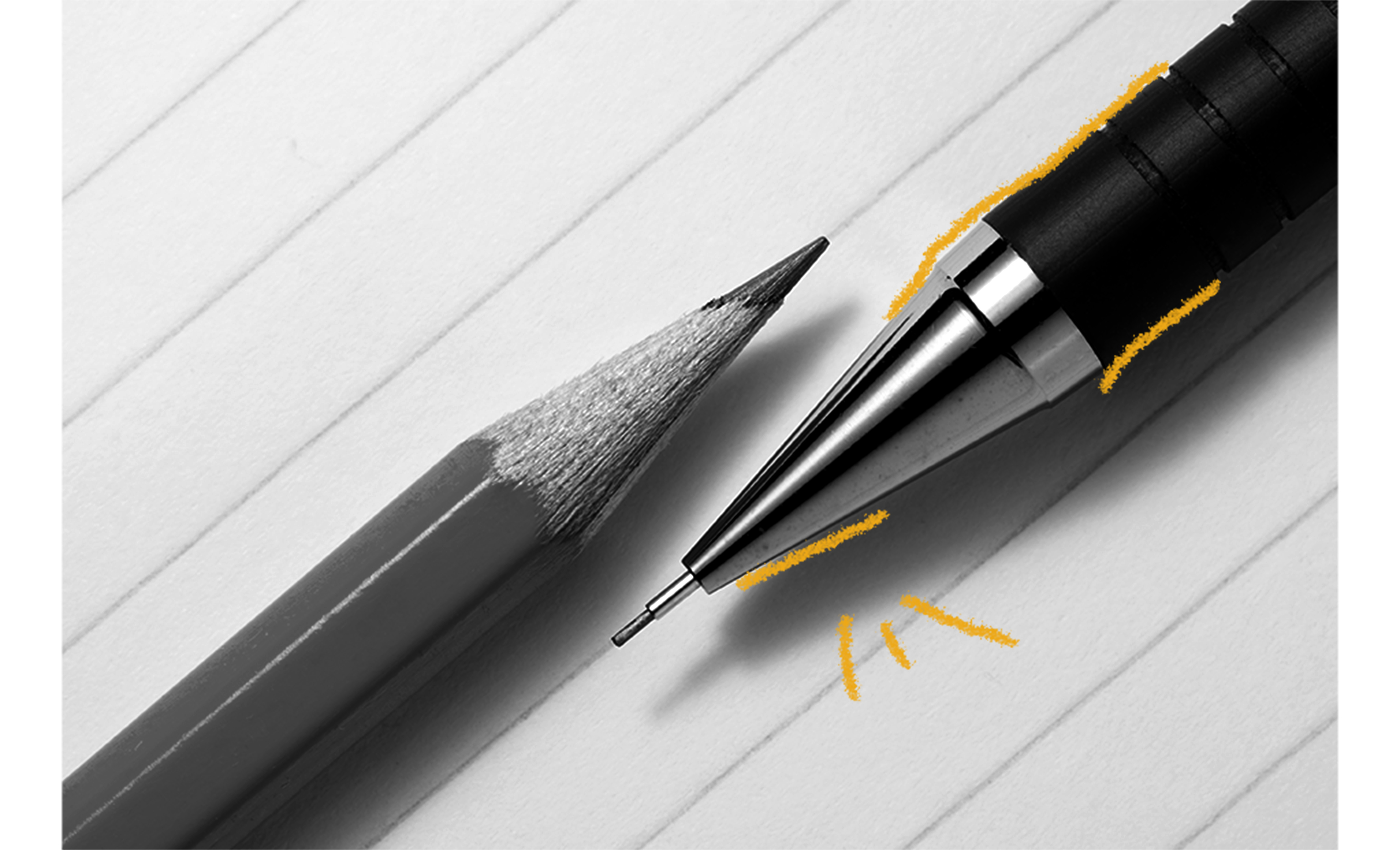While they may seem like a modern invention, mechanical pencils are actually much older than you might think. The first image of a pencil was produced in 1567 and it more closely resembles a modern mechanical pencil than a wooden pencil, as it features a wooden stock with replaceable graphite. There is some evidence of a brass propelling pencil with a spring mechanism that existed as early as 1636, and an early mechanical pencil was found on the wreckage of the HMS Pandora, which sank in 1791. In 1822, John Hawkins and Sampson Mordan patented an “ever-pointed” pencil in Britain and 11 years later, James Bogardus patented a “forever pointed” pencil in the United States. In 1879, Joseph Hoffmann invented the pushbutton clutch in New York City. Soon after, it was incorporated into the Eagle Pencil Company’s Eagle Automatic, the first true mechanical pencil. However, the clutch on the Eagle Automatic made it unsuitable for drafting. Two mechanical pencils were created to address this flaw: the Ever-Ready Sharp Pencil was invented in Japan in 1915, and the Caran d’Ache Fixpencil was created in Geneva in 1929. Since that time, mechanical pencils have switched from metal or wood casings to plastic casings and erasers have been added. (Notably, mechanical pencils used for drafting still generally have metal casings and rarely feature attached erasers.) These improvements were intended to make mechanical pencils more convenient for everyday use in classrooms and offices, where they remain staple items to this day.

Your go-to guide for weird history facts
Subscribe to the FREE daily email that makes learning about history fun.


